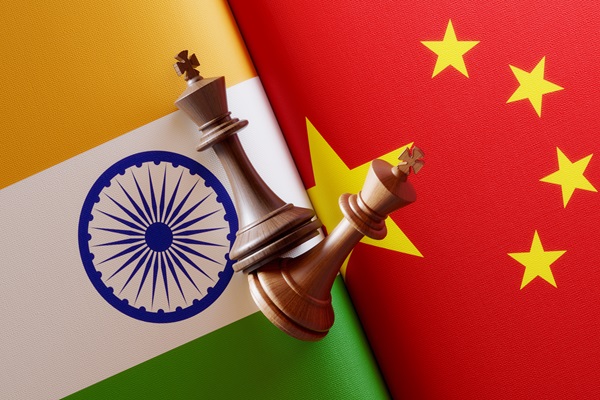.png)

Ajay Srivastava, founder of Global Trade Research Initiative, is an ex-Indian Trade Service officer with expertise in WTO and FTA negotiations.
July 3, 2025 at 5:38 PM IST
In a series of calculated moves, China has stepped up its use of economic leverage to constrain India’s industrial ambitions. Over the past year, Beijing has systematically restricted exports of critical raw materials and engineering support, sending a clear warning to New Delhi as geopolitical tensions and trade realignments intensify. The latest is Chinese battery giant CATL reportedly directing Foxconn to withdraw all Chinese engineers from its manufacturing unit near Chennai.
Earlier, China had imposed curbs on exports of critical minerals such as gallium and germanium—essential for India’s electronics, EV, and defense industries. In late 2024, the restrictions were extended to graphite, dealing a direct blow to India’s clean energy and battery manufacturing sectors.
Citing “national security” reasons, Beijing has cloaked these actions in strategic ambiguity, while tightening its grip on supply chains that India is still dependent on.
While no official explanation has been issued for the latest move, the timing is telling. India is on the verge of finalising a wide-ranging trade deal with the United States. China actions may be signally to avoid any conditions in the FTA that discourage the use of Chinese-origin components in exports to the US.
China’s message is blunt: India’s industrial growth remains dangerously exposed to Chinese inputs, and any attempt to “de-risk” supply chains will carry short-term pain.
And the pain may be excruciating.
In 2024-25, imports from China surged while exports sharply declined, contributing to a trade deficit of about $100 billion. Chinese firms now supply over 80% of India’s needs in laptops, solar panels, antibiotics, viscose yarn, and lithium-ion batteries, deepening strategic vulnerabilities.
China now dominates Indian import baskets across virtually every industrial category — from pharmaceuticals and electronics to construction materials and consumer goods.
In the pharmaceutical sector, India imported $166.3 million worth of erythromycin from China, accounting for 97.7% of its global imports of that antibiotic. China supplied 88.1% of India’s total antibiotic imports, forming the backbone of India’s pharmaceutical ingredient supply.
In electronics and semiconductors, India imported $151.6 million worth of silicon wafers from China, and $1.06 billion in flat panel display modules.
In the renewable energy sector, India imported $1.36 billion worth of solar cells and $1.7 billion of solar panels — with Chinese imports making up 82.7% and 78.9% of those respectively. For lithium-ion batteries — vital for EVs and energy storage — India imported $2.26 billion, of which 75.2% came from China.
The machinery and industrial goods category shows equally deep exposure.
Embroidery machinery imports were worth $351.7 million, with 91.4% sourced from China.
This sweeping reliance across industrial, tech, consumer, and energy sectors underscores the fragility of India’s supply chains and the vulnerability to strategic disruption when sourcing is concentrated in a single country.
China has entrenched itself as India’s default supplier for both everyday products and critical industrial inputs. Without swift and systemic action, this dependence could deepen further, exposing India’s economy to escalating geopolitical risk.
Deepening Dependence
Between 2014 and 2024, China’s dominance over India’s import landscape only widened. Its share in India’s telecom and electronics imports hit 57.2%, while machinery and hardware reached 44%. Chemicals and pharmaceuticals followed closely at 28.3%.
Imports from China in low-tech consumer goods—ceramic tiles, plastic furniture, lighting products, even headgear—rose over 150% in the same period. These goods not only undermine Indian MSMEs but also reflect a widespread erosion of domestic industrial depth.
The data signals a clear imbalance. India is structurally dependent on China, while gaining little market access in return. Without urgent policy intervention, this economic asymmetry will only worsen.
Way Ahead
India’s growing dependence on Chinese imports is not just a result of technological inferiority — it is also a consequence of policy inaction and underinvestment in domestic industrial capabilities. In fact, nearly 90% of India's imports from China are in the low- to medium-technology range, including products such as textile and agricultural machinery, taps, valves, pumps, compressors, building hardware, moulds, bearings, motors, nuts and bolts, and even stationery. These are not beyond India’s technological reach. A strategic and phased approach can help reduce this dependence significantly.
The first step is to launch a nationwide reverse-engineering initiative. Sector-specific industrial labs should be set up to deconstruct commonly imported goods and develop standardised, open-access blueprints. These designs can then be shared with Indian MSMEs for niche production and with larger firms for mass manufacturing. This model, combining public R&D and private production, would enable rapid substitution of many high-volume imports.
India should also create a “Localize-100” tracker to monitor progress on localising the top 100 low- and mid-tech imports from China. Production-linked incentives and fast-track regulatory approvals should be extended to companies that take up domestic manufacturing of these items.
However, India cannot stop at the easy wins. Reducing dependence on China in high-technology sectors requires a fundamentally different strategy — one that embraces deep manufacturing, not just shallow assembly. Today, many so-called manufacturing investments in electronics are still dependent on importing critical parts such as chips, PCBs, memory units, camera modules, and sensors from China.
India must instead learn from countries like Japan and South Korea, which have built robust, vertically integrated ecosystems to manufacture these key inputs domestically. Achieving this will demand long-term vision, patient capital, and sustained investment in R&D, infrastructure, and talent. India must nurture firms that can design and fabricate advanced components, and back them with targeted fiscal and regulatory support.
Alongside this dual-track manufacturing strategy, India must also review the extent and nature of Chinese firm participation in its critical sectors. Unlike Japan or South Korea, China is a geopolitical and strategic rival. India must therefore assess carefully which sectors are open to Chinese investment, the depth of that engagement, and the long-term implications for economic sovereignty and national security.
Sensitive areas such as telecom networks, power equipment, fintech infrastructure, and critical logistics must be insulated from Chinese control or overdependence. Where required, restrictions should be imposed and trusted global partners — including Japan, Taiwan, and the EU — brought in to develop alternative ecosystems.
India’s import dependence on China is not inevitable. With a focused strategy — built on rapid import substitution, deep-tech industrial investments, and careful strategic screening — India can reduce vulnerability while building lasting industrial self-reliance. The objective is not isolation, but calibrated economic autonomy.
The window to act is narrow, but the urgency is now unmistakable. China’s actions are no longer just a warning—they are a wake-up call.




